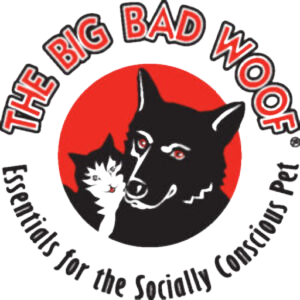Much Ado About Raw Food
This isn’t an attempt to boost sales of a particular product. This is an appreciation post.
Per the AAFCO website “ Uncommon, but well-publicized, events have occurred when a pet food was to blame for a pet’s illness or death, or when a pet owner may have become ill handling contaminated pet food or treats…. The best defense consumers have is understanding what they are feeding animals in the first place, how to handle pet food products safely and how to use them correctly in feeding companion animals.”
I’ve been a pet person my whole life so I took it for granted that I was up to date on pet health. But I did not know that kibble was invented in 1957. My mom is only one year older than kibble!
I’ve learned a ton in the last few months and the resources provided by Steve’s Real Food have had a strong hand in my education. The Big Bad Woof has partnered with Steve’s Real Food in presenting a series of webinars aimed at educating pet parents about pet health, and in August we hosted a webinar about raw food safety.
It makes sense that folks would have concerns about feeding their pets raw food. Words like “food borne illness” and “salmonella” are associated with raw food, and unfairly. Only when food is handled irresponsibly is it compromised.
Steve’s is so responsible that they’ve made consumer education part of their mission, and that falls neatly in line with The Big Bad Woof’s mission. 40% of our pet food is raw food! We are constantly talking about food as medicine, and Pennye even lectures on the subject. (She’s the #1 resource in my education) Why is that significant?
First things first; dogs have been eating since before 1957, and even before dogs and humans began coexisting, dogs were eating. What were they eating? Whatever they could get aka scavenging.
Most of that was raw food but they also eat vegetation. They would eat the whole animal, too, not just the liver or rawhide. Dogs are opportunistic carnivores and cats are obligate carnivores, meaning they need protein. Not carbohydrates.
The industrial revolution is what changed things up and got pet diets off course. After WWII American industrial dominance emerged and the ability to mass produce things led to the mass marketing of those things, and convenience outweighed health for a long time. A massive amount of cheap, processed aka cooked pet food flooded the market, and people didn’t know better.
Cooking foods removes moisture and essential nutrients, and chemically changes food. That’s why we’re always urged to eat several servings of raw fruits and vegetables daily. Dehydration is a chronic problem that can be solved by eating whole, uncooked foods. That principle applies to our pets as much as it does to humans.
Goat milk is referred to as “mother’s milk” because it is a universal hydrator. Organ meat and raw marrow inside bones are the best source of enzymes. And raw protein is much easier to digest. So what’s the issue? Why does this all sound so weird? Why do people worry about handling and feeding raw foods?
While we mammals have a lot in common, people and pets handle different bacteria differently; pets have higher tolerance for many bacteria than humans do. So the trigger keywords that we’ve come to associate with danger, like e. Coli and salmonella, apply to you and me but not to our pets.
However, in the interest of safety, high pressure processing is used when making raw pet foods and that step is what eliminates these bacteria. What about parasites? Ringworm and tapeworm are common but when food is freeze-dried, parasites are eliminated, even more so than when food is cooked with heat.
Freeze drying and high pressure processing are the conservative steps that are necessary when producing raw pet food, and we only carry raw brands that live up to these high standards. What we at The Big Bad Woof aim to do is offer convenience and good health so everyone is happy.
